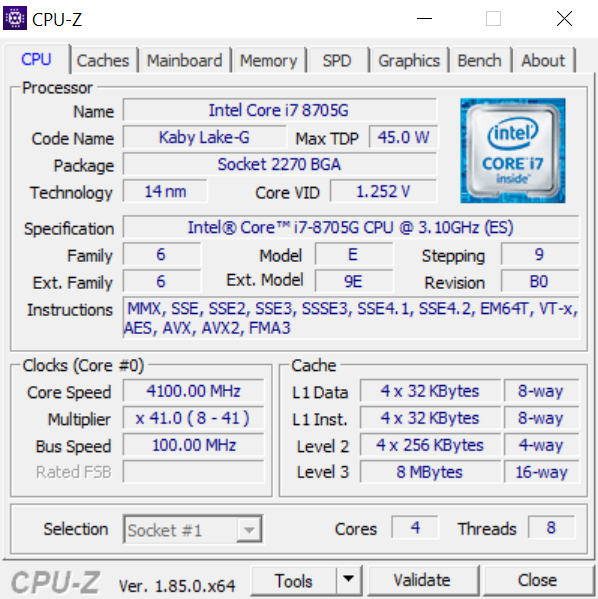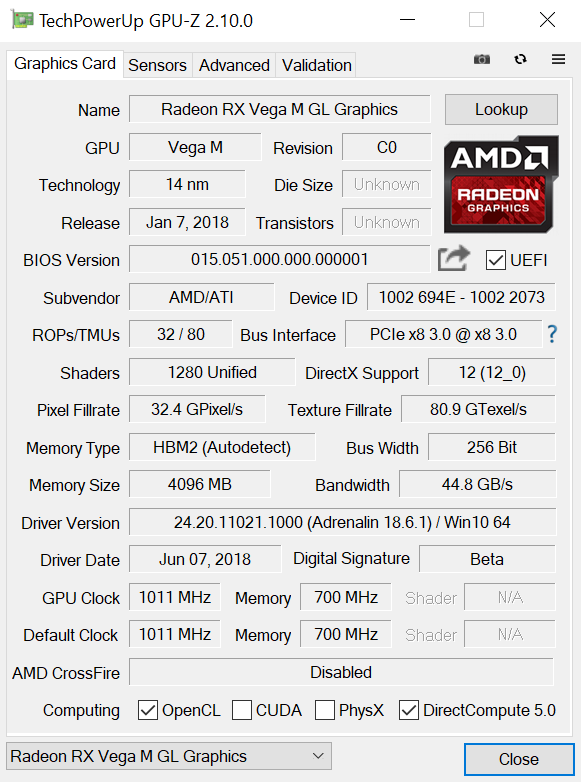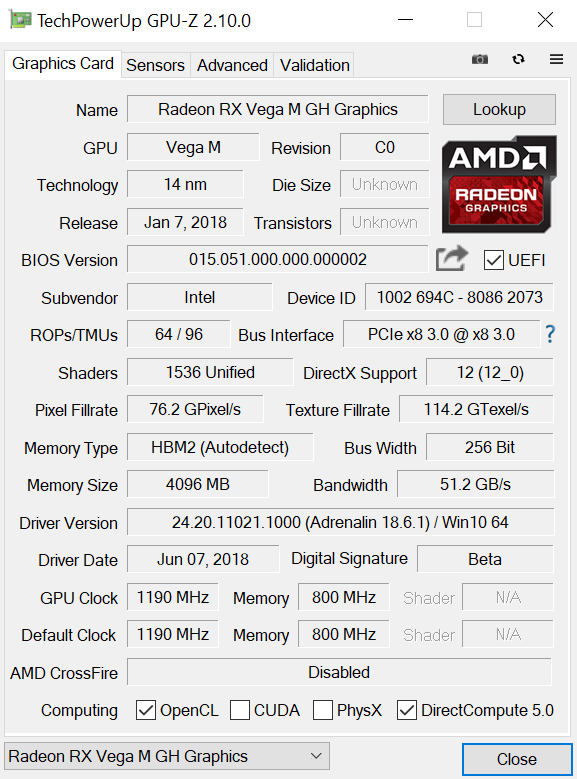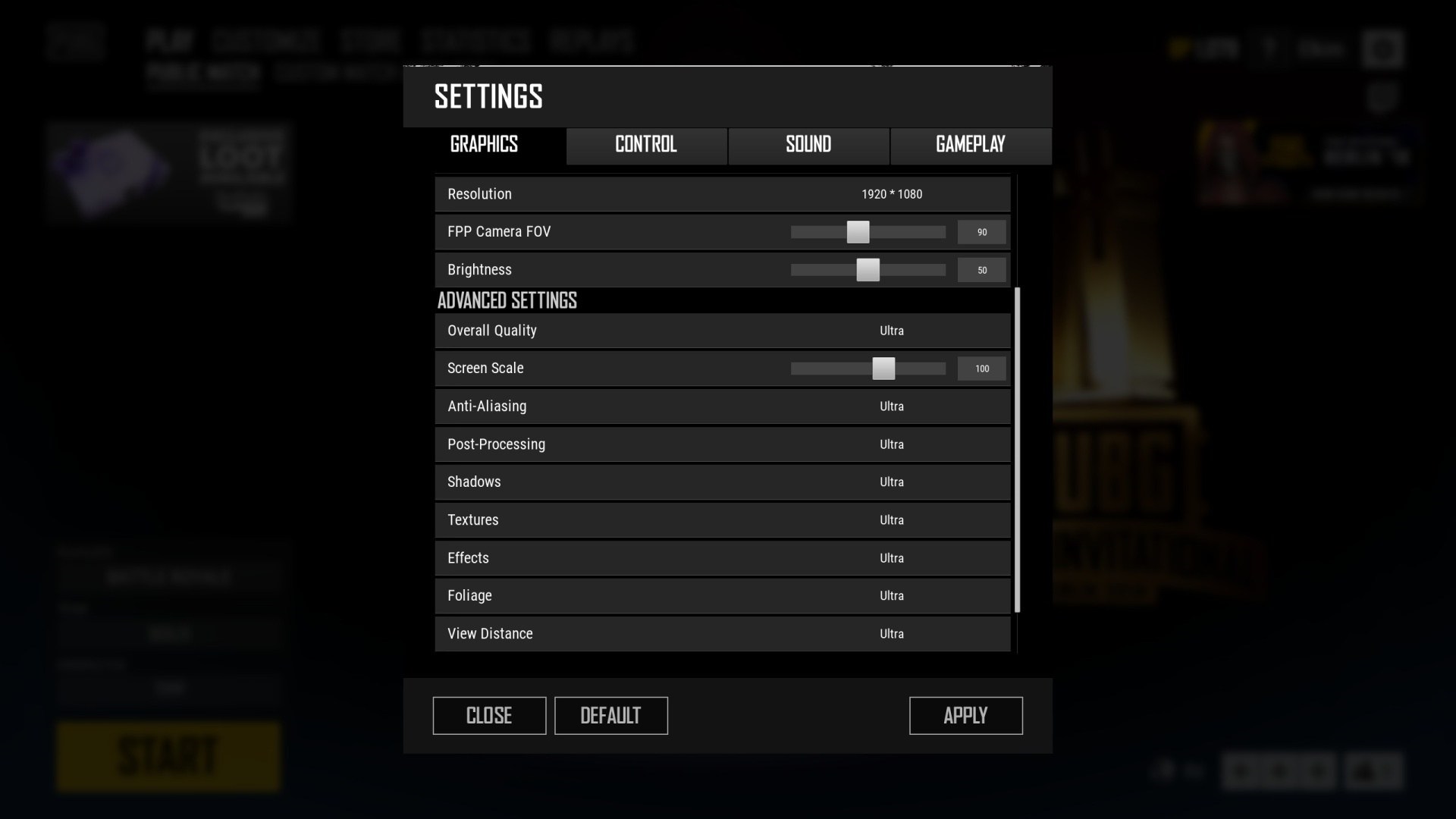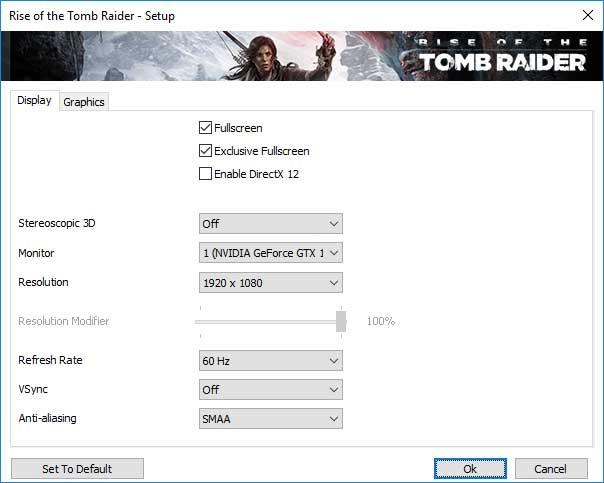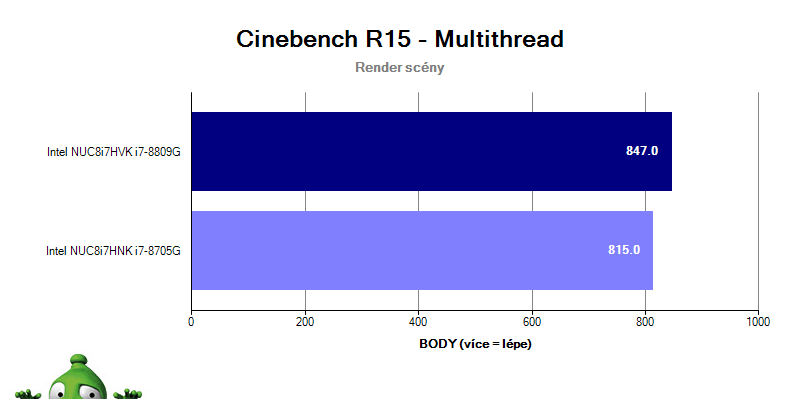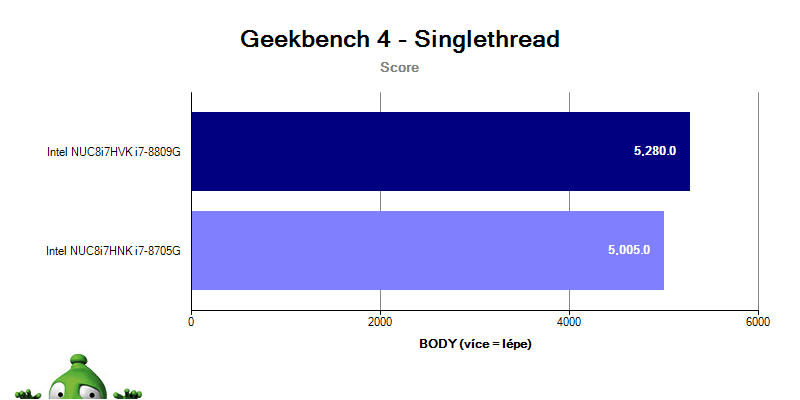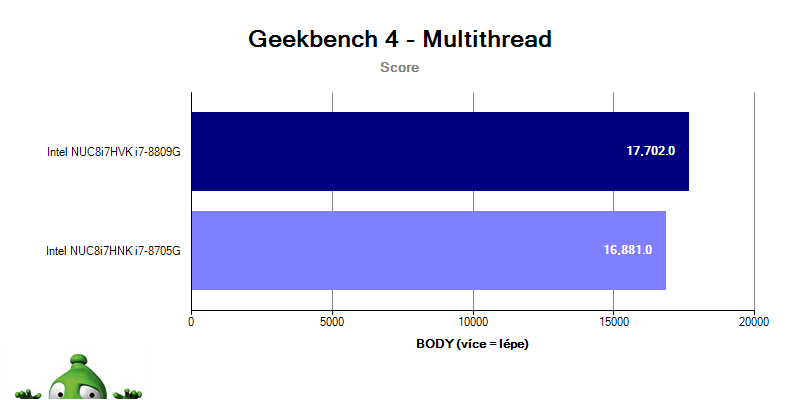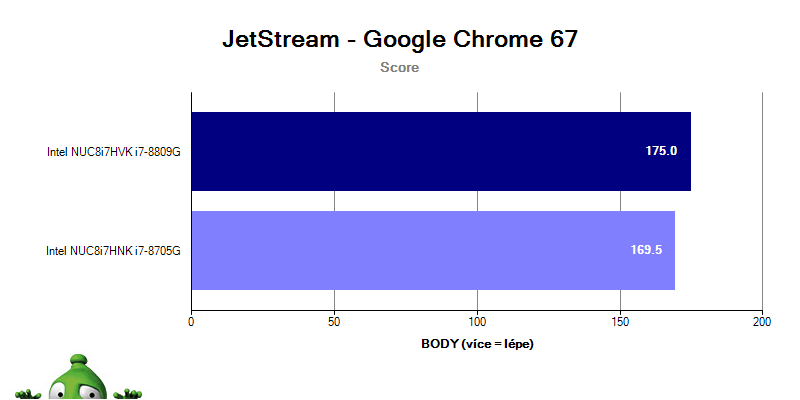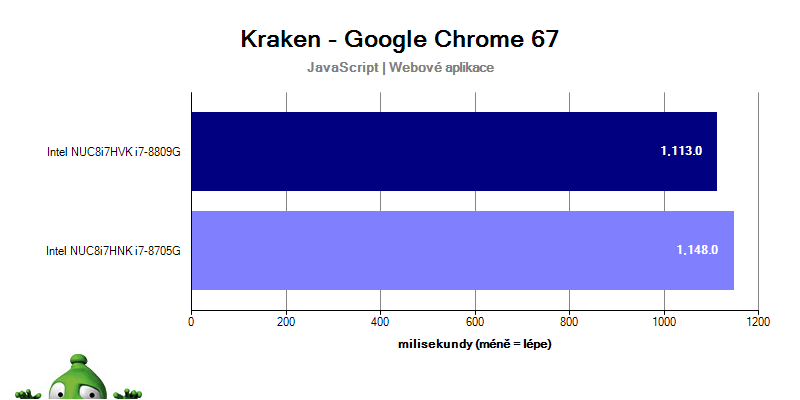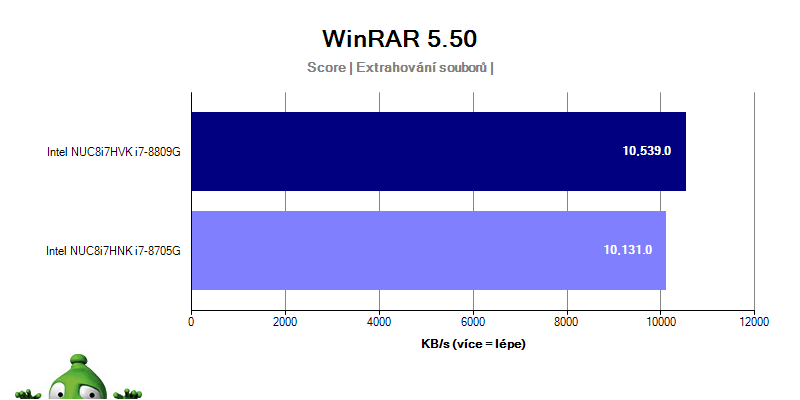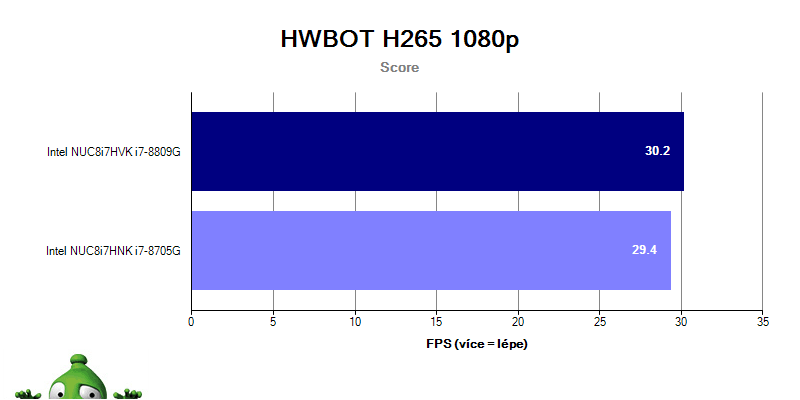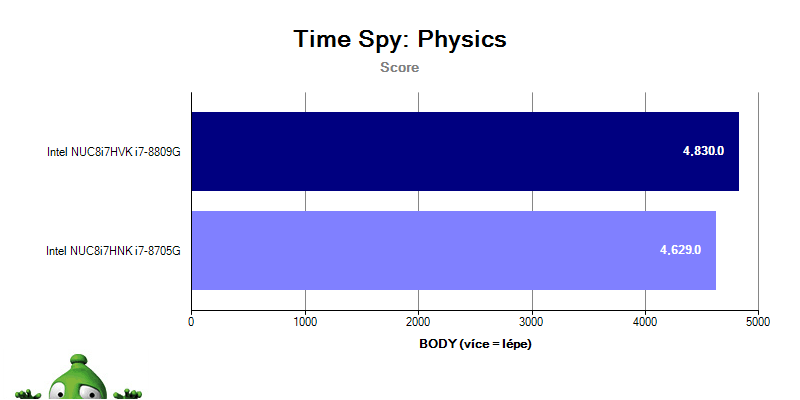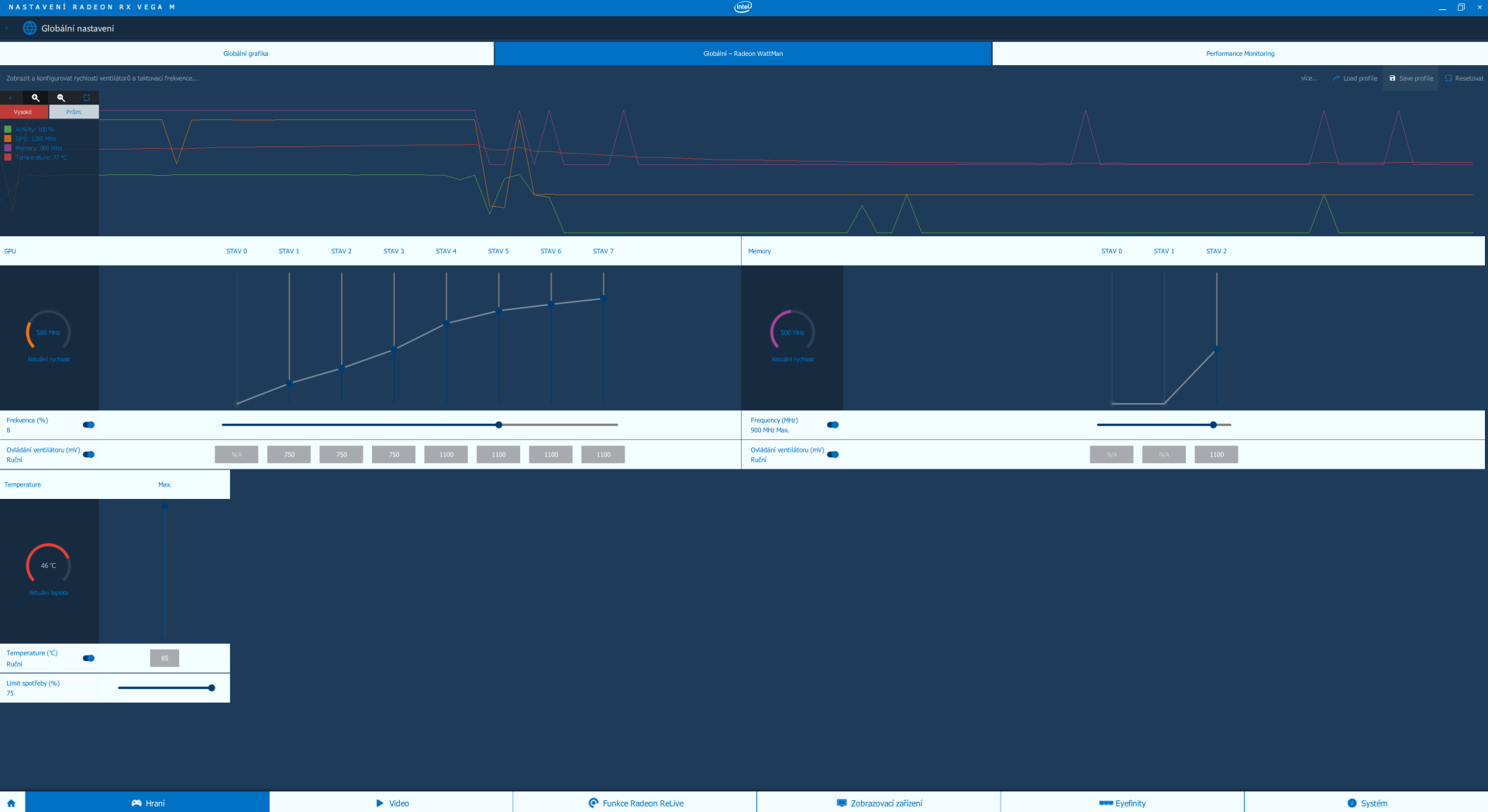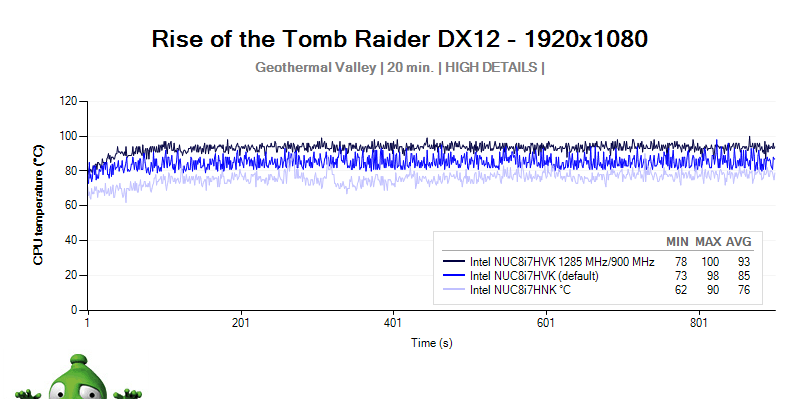Intel NUC Hades Canyon (REVIEW AND TESTS) – Uncompromising performance in your pocket!
For me as an overclocker, maximum performance is always most important, but I have to admit that, for years, there has, in my heart, been a single exception to this rule. And this exception is the NUC microcomputer made by Intel. I always had to cut some slack for Intel’s NUC, but this is no longer true with the release of Hades Canyon, which we’ll be talking about and testing today. The most recent mini PCs underwent a bona fide marketing and development revolution when Intel joined forces with AMD, giving you access to an uncompromising combination of pocket performance which is more than sufficient for Full HD gaming with high details and a smooth framerate.
Intel NUC Hades Canyon (REVIEW AND TESTS) – CONTENTS
- Intel NUC Hades Canyon – specifications, price and comparison
- Intel NUC Hades Canyon tests
- Comparison: Intel NUC Hades Canyon vs. ASUS RX STRIX 560 O4G EVO – gaming performance
- Intel NUC Hades Canyon tests: PUBG
- Intel NUC Hades Canyon tests: Fortnite
- Testujeme Intel NUC Hades Canyon: Counter Strike Global Offensive
- Intel NUC Hades Canyon tests: Rise of the Tomb Raider
- Intel NUC Hades Canyon tests: Star Wars Battlefront
- Intel NUC Hades Canyon tests: Performance in 2D work environment
- Intel NUC Hades Canyon tests: Clocking and performance increase
- Intel NUC Hades Canyon tests: Operating properties
- Intel NUC Hades Canyon mini PC maintenance
- Conclusion – our verdict on Intel NUC Hades Canyon
Intel NUC Hades Canyon – specifications, price and comparison
| Model | Intel NUC KIT NUC8i7HNK | Intel NUC KIT NUC8i7HVK |
|---|---|---|
| CPU | Intel Core i7-8705G | Intel Core i7-8809G |
| Base frequency | 3,1 GHz | 3,1 GHz |
| Boost frequency | 4,1 GHz | 4,2 GHz |
| Hyper-Threading | 4c/8t | 4c/t |
| Integrated GPU | Radeon RX Vega M GL + Intel HD Graphic 630 | Radeon RX Vega M GH + Intel HD Graphic |
| L3 Cache | 8 MB | 8 MB |
| Number of PCI-E 3.0 lines | 16× | 16× |
| Unlocked multiplier | ✕ | ✕ |
| TDP | 65 W | 100 W |
| Graphic outputs | 2× Min-DP 1.2, 2× Thunderbolt 3, HDMI 2.0a | 2× Min-DP 1.2, 2× Thunderbolt 3, HDMI 2.0a |
| M.2 PCIe x4 slots | 22 × 40/80 a 22 × 80 | 22 × 40/80 a 22 × 80 |
| DDR4 | max 32 GB (2× SO-DIMM) | max 32 GB (2× SO-DIMM) |
| Retail price | 783,86 EUR | 979,92 EUR |
* To avoid confusion, or if you are unfamiliar with the Intel NUC product family, the tested models are sold without RAM and SSD drives, which have to be bought separately. The prices were valid on 27. 7. 2018.
i7-8705G vs. i7-8809G comparison
You might be wondering what difference there is between these two models of Intel NUC Hades Canyon, apart from the price. As you can see in the table, the difference between i7-8705G included in the lesser model and i7-8809G lies in a mere 100 MHz in the Boost frequency. The nicest thing about both models, though, is that for the first time in the history of the Intel NUC range, these models feature a quad-core CPU with Hyper-Threading, which provides you with eight processing threads in total.
However, you might be confused by the labeling of AMD RX Vega M GPU, where the cheaper model is labeled GL and the more expensive model is labeled GH. First of all, you must know that the labeling of the GPU, Radeon RX Vega M, can be a bit misleading. GPUs codenamed RX Vega M are actually Polaris 22 chips equipped with AMD Radeon RX Vega memory drivers, where they inherited the name from. What, then, is the difference? Well, whereas the lesser and cheaper GL chip includes 20 graphics processing cores, the more expensive and more powerful GH chip boasts 24 processing cores. Even though that may seem a negligible difference, in theory, it may increase the performance of the GPU by up to 20%.
Radeon Vega M GL vs. Radeon Vega M GH comparison
If that piqued your interest, you might find that there’s another difference between GL and GH chips: almost 18% in the GPU frequency in the maximum Boost mode of the cores, and about 14% in the HBM2 memory frequency. This combination of 4 extra processing units and higher frequencies in the higher model suggest that the Intel NUC codenamed 8i7HVK is no slouch and will significantly outperform its younger and cheaper sibling. The reality will soon show itself in the tests.
Intel NUC Hades Canyon tests
It’s usually difficult to compare devices such as NUCs. Obviously, there are other PCs with similar configurations, but the Intel NUC is unique in a way, and it would make little sense to compare it to, for example, a gaming laptop. One of the undisputed advantages of these devices is their so-called VESA compatibility, which makes it possible to connect the mini PC to the back of a monitor. In a way, one of the possible use cases of these computers could entail a simulation of All-In-One devices with sufficient performance. More likely, however, is their typical operation as a desktop computer, where their small size could save a lot of space. And finally, the Intel NUC is most convenient when used for so-called LAN parties or simply as a portable computer. To be able to compare the performance of both NUC models with other devices, I chose a low-end gaming ASUS RX 560 STRIX O4G EVO GPU, which should give you a rough idea of the performance of the AMD Radeon RX Vega GPU chips.
Comparison: Intel NUC Hades Canyon vs. ASUS RX STRIX 560 O4G EVO – gaming performance
Since Full HD gaming, which the performance of the tested mini PCs is generally aimed at, is particularly prolific in eSports, I chose three multiplayer games to test with regards to roster gameplay.
Which games were tested on Intel NUC Hades Canyon?
- PUBG
- Fortnite
- CS: GO
- Rise of the Tomb Raider
- Star Wars: Battlefront
Intel NUC Hades Canyon tests: PUBG
 PUBG is a longstanding recent hit, which made it from nothing to the front lines of eSports and to the top of the most-played roster on STEAM. The game was developed by Blue Hole and uses the increasingly common Unreal Engine 4. The game was tested using the REPLAY feature on the Erangel map in the Quarry section. The test consists of a 60-second-long run across the entire quarry from the west to the south. The scene was measured in three different settings – MEDIUM, HIGH and ULTRA.
PUBG is a longstanding recent hit, which made it from nothing to the front lines of eSports and to the top of the most-played roster on STEAM. The game was developed by Blue Hole and uses the increasingly common Unreal Engine 4. The game was tested using the REPLAY feature on the Erangel map in the Quarry section. The test consists of a 60-second-long run across the entire quarry from the west to the south. The scene was measured in three different settings – MEDIUM, HIGH and ULTRA.
PLAYERUNKNOWN's BATTLEGROUND |

PUBG is a fairly demanding game, even in Full HD. However, the good news is that the more powerful model of Hades Canyon is capable of delivering almost 60 FPS even in the HIGH details setting. The performance increase in comparison to the weaker model is notable and, as far as I’m concerned, the extra several thousand crowns are well spent.
Intel NUC Hades Canyon tests: Fortnite
 Despite its very different visual style, Fortnite has become a direct competitor of PUBG and has successfully divided the fans of Battle Royale games into two camps. The game was developed by Epic Games and uses Unreal Engine 4, just like PUBG. Because this game does not include a REPLAY feature, it was tested in “Save the World” single player mode. The test scenario is measured for 100 seconds by OCAT and MSI Afterburn software. All three detail settings have the 3D ratio set to 100%, i.e. 1920X1080 resolution.
Despite its very different visual style, Fortnite has become a direct competitor of PUBG and has successfully divided the fans of Battle Royale games into two camps. The game was developed by Epic Games and uses Unreal Engine 4, just like PUBG. Because this game does not include a REPLAY feature, it was tested in “Save the World” single player mode. The test scenario is measured for 100 seconds by OCAT and MSI Afterburn software. All three detail settings have the 3D ratio set to 100%, i.e. 1920X1080 resolution.
Fortnite |

The Fortnite tests provided a similar result: the Intel NUC 8i7HVK with the more powerful GH chip boasts enough performance even for the HIGH preset. I would say that this performance in such a small package is exceptional, for example, if you’re traveling or want to spend your vacation at the cottage.
Counter Strike: Global Offensive test settings
 According to Steam stats, Counter Strike: Global Offensive is still one of the most widely-played and most popular games. This game has always been, and will likely always be, the cornerstone of the entire eSports segment. The game was developed and published by Valve and it uses Direct X 11. For the test, we used the de_dust2 map without bots for 60 seconds. The scenario is measured by the FRAPS tool. For CS: GO tests, we have recorded various metrics, such as frame times and GPU load, using MSI Afterburner. The data logs from both files are then synchronized to provide an analysis of the frame rate. The game runs with the “-console” parameter, which is then used to set the “fps_max 0” parameter.
According to Steam stats, Counter Strike: Global Offensive is still one of the most widely-played and most popular games. This game has always been, and will likely always be, the cornerstone of the entire eSports segment. The game was developed and published by Valve and it uses Direct X 11. For the test, we used the de_dust2 map without bots for 60 seconds. The scenario is measured by the FRAPS tool. For CS: GO tests, we have recorded various metrics, such as frame times and GPU load, using MSI Afterburner. The data logs from both files are then synchronized to provide an analysis of the frame rate. The game runs with the “-console” parameter, which is then used to set the “fps_max 0” parameter.
CS:GO |

With CS: GO, there isn't much to complain about. Even with the most demanding preset using MSAA x8 smoothing, the Radeon RX Vega M GH pushes almost 300 FPS, which is certainly more than enough for competitive play over the weekend. Of course, 600 FPS is 600 FPS, but you probably couldn’t pack that into a device that would fit into the palm of a larger man’s hand.
Intel NUC Hades Canyon tests: Rise of the Tomb Raider
 Rise of the Tomb Raider is the newest installment of the legendary gaming adventure with Lara Croft. The game was created by Crystal Dynamics and uses the Horizon engine. This game is also included in the program The Way It's Meant to be Played by NVIDIA and fully supports DirectX 12. Once again, the section chosen for the CPU measurement is different from the one used for GPU tests. The Geothermal Valley location places very high demands on the CPU, and if the GPU is limited by the CPU anywhere in this game, it will be here. The part for the frame time measurement is 100 seconds long and the game is set at Ultra details with SMAA anti-aliasing at both resolutions.
Rise of the Tomb Raider is the newest installment of the legendary gaming adventure with Lara Croft. The game was created by Crystal Dynamics and uses the Horizon engine. This game is also included in the program The Way It's Meant to be Played by NVIDIA and fully supports DirectX 12. Once again, the section chosen for the CPU measurement is different from the one used for GPU tests. The Geothermal Valley location places very high demands on the CPU, and if the GPU is limited by the CPU anywhere in this game, it will be here. The part for the frame time measurement is 100 seconds long and the game is set at Ultra details with SMAA anti-aliasing at both resolutions.
Rise of the Tomb Raider |

Lara will soon leave our test methodology, but because she’s going to return soon in Shadow of The Tomb Raider, this older test becomes relevant again. For me personally, RotR is usually a crucial benchmark, which is why I was very surprised by the performance results. In my opinion, 60 FPS on HIGH under DX12 is a great result.
Intel NUC Hades Canyon tests: Star Wars Battlefront
 Star Wars: Battlefront is an action first person/third person shooter set in the world of the Star Wars movies. The game was developed for the Frostbite 3 engine by EA DICE and was released in November 2015 by Electronic Arts. The game is a part of AMD’s Gaming Evolved initiative. The frame rate and frame times were measured on the Survival on Tatooine map for 105 seconds using the FRAPS tool. The run through the test scenario is captured in the attached video. The details about the settings of the graphics interface for test purposes are listed in the attached screenshots.
Star Wars: Battlefront is an action first person/third person shooter set in the world of the Star Wars movies. The game was developed for the Frostbite 3 engine by EA DICE and was released in November 2015 by Electronic Arts. The game is a part of AMD’s Gaming Evolved initiative. The frame rate and frame times were measured on the Survival on Tatooine map for 105 seconds using the FRAPS tool. The run through the test scenario is captured in the attached video. The details about the settings of the graphics interface for test purposes are listed in the attached screenshots.
Star Wars: Battlefront |

Finally, to give RX 560 a chance as well, I chose an older but still popular game from a well-known genre. You can comfortably play in Ultra details with a decent FPS which will not limit the smoothness of the gameplay.
Intel NUC Hades Canyon tests: Performance in 2D work environment
The most interesting thing about the new Hades Canyon models is, of course, the graphics performance of their Radeon RX Vega M chips, but as I mentioned earlier, the CPUs have undergone a revolution as well: they boast fairly high Boost frequencies, but most importantly, they feature Hyper-Threading, which means there are a total of 8 processing threads available. The following results should mainly answer the question whether you should invest into the more powerful model for 2D work or not.
What 2D applications were used for our tests?
- Cinebench R15 ST/MT
- GeekBench 4 ST/MT
- JetStream
- Octane
- Kraken
- WinRAR
- HWBOT H265
- Time Spy Physics
Intel NUC Hades Canyon performance in Cinebench R15
I consider the SingleThread tests to be crucial, because many applications can still use only a single processing thread. The difference in performance provided by the extra 100 MHz is not very significant, but it’s something.
Basically, the same scenario multiplied by a higher number of threads is repeated in the multi-thread test.
Intel NUC Hades Canyon performance in GeekBench 4
GeekBench 4 contains a wide range of various tasks, which include most tasks you can encounter. There is a difference, but it’s not significant.
The same results are confirmed when using all eight processing threads.
Intel NUC Hades Canyon performance in JetStream benchmark
JetStream and the following two tests are relevant for the web environment performance with JavaScript-based operations.
Intel NUC Hades Canyon performance in Octane benchmark
As you can easily see from the test, there is a difference in browsing and other web applications, but again, it’s not significant.
Intel NUC Hades Canyon performance in Kraken benchmark
The Kraken benchmark analyses the time it takes to perform a single task. The fewer milliseconds, the better.
WinRAR and file extraction speed with Intel NUC Hades Canyon
This is a classic test. Extracting multiple files from one archive. On slower PCs, this is usually a time-consuming task, but the Intel NUC Hades Canyon provides ample performance that will not unduly strain your patience.
HWBOT H265 and Intel NUC Hades Canyon performance
HWBOT H265 is a Czech benchmark developed by our overclocker Havli. The test measures the performance of video encoding using the H.265 (HEVC) codec, which places quite a lot of demand on CPU power. Based on my personal tests, however, I can attest that even the playback of 4K movies with a high bitrate is completely smooth.
Time Spy Physics and Intel NUC Hades Canyon performance
The last test uses Time Spy Physics, which calculates the physics in a game environment. Again, the difference is not significant.
Intel NUC Hades Canyon tests: Clocking and performance increase
The clocking of these miniPCs is not difficult. As we know, a frequency increase is based on low temperatures, and the more powerful Hades Canyon model, which is the only model to offer options to increase Power Limit, GPU core and HBM2 memory settings, does not completely provide a viable temperature. Even so, there is some room for an increase.
HBM2 memory allowed for easy overclocking from the default setting of 800 MHz to 900 MHz, but the actual difference in gaming performance was negligible. Only when we overclocked the core frequency from 1190 MHz to 1285 MHz did we see an increase by a few FPS, but again, this was not significant.
Intel NUC Hades Canyon tests: Operating properties
High performance in such a small and enclosed space poses some questions. Let’s take a look at temperatures and consumption in a common gaming environment. To compare both models, including the overclocking of the more powerful and expensive model, I chose a 20 minute segment in the Geothermal Valley map in Rise of the Tomb Raider, which will thoroughly test the temperature of any CPU and GPU.
CPU temperatures in Intel NUC Hades Canyon
I should also add that the overclocking result used the maximum Power Limit in AMD Wattman set to 75% and the maximum CPU temperature set to 85° C. This is as high as these settings go and, without pushing the limits further, it was impossible to achieve a stable overclocking of the GPU core. In the overclocking result, the fans were set to 1100 mV.
GPU Radeon RX Vega M temperatures in Intel NUC Hades Canyon
The lower Power Limit of the entire board in the weaker model is readily apparent in the chart. The more powerful NUC can get quite hot, but it achieves an appropriate performance difference. In the weaker model, AMD Wattman is not available, therefore there was nothing to set and overclock.
Intel NUC Hades Canyon consumption
In this case, the consumption was measured using an in-game benchmark. The values displayed in the chart represent so-called peak consumption, or the highest recorded consumption. The integrated benchmark uses several different scenes you will encounter in the game; this provides useful information concerning the peak consumption in moments where both the GPU and CPU are under heavy load.
Intel NUC Hades Canyon mini PC maintenance
NUC devices share a small disadvantage with notebooks; their maintenance is fairly complicated, especially when it comes to dust management. The complete disassembly of the case, if you want to reapply the thermal paste, will require skilled hands and you probably won’t be able to avoid a slight bending of the aluminum frame. If you want to see the disassembly process of the NUC Hades Canyon and how it looks inside, watch the following video.
Generally speaking, the cooling is designed with a sufficient margin. I was tempted to disassemble the NUC and reapply the thermal paste to achieve better OC results, but it would be pointless due to the maximum 8% frequency increase on the GPU core.
Conclusion – our verdict on Intel NUC Hades Canyon
As I mentioned in the beginning, I have a soft spot for Intel NUC miniPCs. These are attractive devices and, with the newest Hades Canyon range, also offer decent performance. On the other hand, I also own a regular gaming PC and I don’t play very often on the NUC, even though I play a less-demanding game when I don’t want to turn on my gaming PC on the benchtable for some reason. I can see the Hades Canyon devices being most useful for travel or for the aforementioned LAN parties. This device can also offer a great solution, if you have a small table and not enough space.
Intel NUC Hades Canyon, especially in the more powerful version, is an attractive choice if you’re looking for an elegant and minimalistic solution with sufficient power and aren’t on a tight budget. One of the things that I really like (and which was missing in the previous generation) is the display connectivity for the simultaneous operation of two 4K displays. Aside from HDMI 2.0a and USB-C, Hades Canyon offers two mini-DisplayPorts, so you can easily connect two high-resolution monitors with 60 Hz refresh rate. For me personally, this makes Hades Canyon my 24/7/365 computer, which offers me enough performance for regular everyday work. The only downside, which I would like to see rectified, is the compatibility of Linux distributions. I was unable to get past the initial installation process on Hades Canyon.

Intel NUC Hades Canyon
Mini PC IntelIntel NUC Hades Canyon, an unique miniPC with surprisingly high performance in an exceptional package, deserves our highest mark, the golden Alzák.
Pros
- High performance in Full HD gaming
- i7 with Hyper-Threading (4c/8t)
- Awesome mini construction
- 2x4K@60Hz display connectivity
- Design
Cons
- Higher purchase price
- Necessity of buying RAM and SSD (M.2 only) separately
- Louder operation under load
- The weaker HNK version cannot be overclocked

Michal Mikle
I'm an overclocker and enthusiast Bitcoiner. With computer hardware, any unused performance won't keep me calm. If there is the possibility of squeezing another drop of power from the hardware, I won't miss it. I love the adrenaline and pushing the limits, of the components and myself. This activity is rich with choices, but I mainly use liquid nitrogen and phase-change methods. I also set up a service to optimise Intel processors, delid.cz, building custom PC setups on demand and I enjoy security and privacy topics. Outside the digital world I'm interested in permaculture and other low time preference systems.
